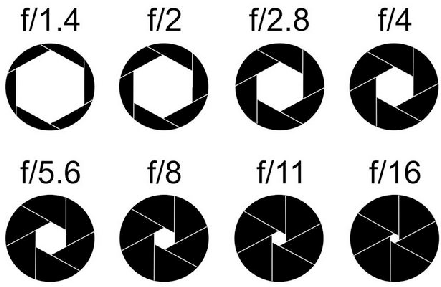
Next: 4.6 Displays Up: 4.5 Cameras Previous: Shutters Contents Index
 |
The optical system also impacts the amount of light that arrives to the sensor. Using a pinhole, as shown in Figure 4.31, light would fall onto the image sensor, but it would not be bright enough for most purposes (other than viewing a solar eclipse). Therefore, a convex lens is used instead so that multiple rays are converged to the same point in the image plane; recall Figure 4.11. This generates more photons per sensing element. The main drawback is that the lens sharply focuses objects at a single depth, while blurring others; recall (4.6). In the pinhole case, all depths are essentially ``in focus'', but there might not be enough light. Photographers therefore want to tune the optical system to behave more like a pinhole or more like a full lens, depending on the desired outcome. The result is a controllable aperture (Figure 4.34), which appears behind the lens and sets the size of the hole through which the light rays enter. A small radius mimics a pinhole by blocking all but the center of the lens. A large radius allows light to pass through the entire lens. Our eyes control the light levels in a similar manner by contracting or dilating our pupils.. Finally, note that the larger the aperture, the more that the aberrations covered in Section 4.3 interfere with the imaging process.
Steven M LaValle 2020-01-06